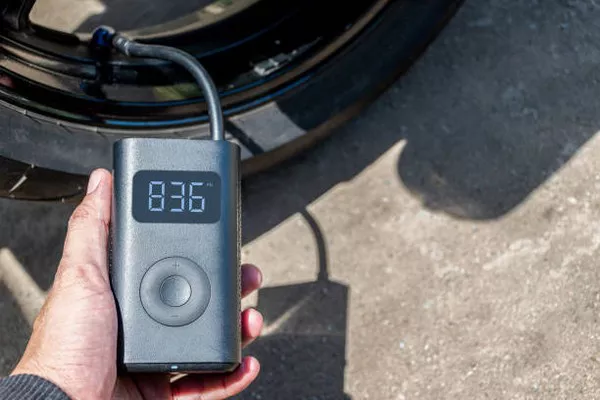Compressors are essential components in various industries, ranging from manufacturing to HVAC systems and even in everyday household appliances. These mechanical workhorses play a vital role in maintaining proper air pressure, ensuring the smooth operation of many processes. However, like any mechanical system, compressors can encounter issues and require repair. In this article, we will explore the possibilities and challenges associated with repairing compressors, highlighting the importance of regular maintenance and the factors to consider when deciding whether to repair or replace a malfunctioning compressor.
Understanding Compressors
Before delving into the world of compressor repair, it’s crucial to understand what a compressor is and how it functions. A compressor is a mechanical device that pressurizes a gas or air to increase its density. It essentially reduces the volume of a gas, making it more compact, and increases the pressure in the process. There are various types of compressors, each designed for specific applications. Common types include reciprocating compressors, rotary screw compressors, and centrifugal compressors, each with distinct designs and working principles.
The Importance of Maintenance
Regular maintenance is key to prolonging the lifespan of a compressor and avoiding costly breakdowns. Preventive maintenance can help identify and rectify minor issues before they escalate into major problems. The maintenance routine typically includes inspecting and cleaning components, checking for leaks, and monitoring oil levels. Regular maintenance not only ensures optimal performance but also helps in maintaining energy efficiency, reducing operational costs, and minimizing downtime.
Repairing a Compressor
When a compressor exhibits signs of malfunction or decreased performance, it’s essential to assess whether repair is a viable option. Here are some key considerations when contemplating compressor repair:
Diagnostic Evaluation: Before determining whether a compressor can be repaired, a thorough diagnostic evaluation is necessary. This involves a comprehensive examination of the compressor’s components and operational performance. It’s essential to identify the root cause of the issue, whether it’s a mechanical problem, an electrical fault, or something else.
Cost-Benefit Analysis: One of the primary factors influencing the decision to repair or replace a compressor is the cost involved. A cost-benefit analysis should compare the estimated repair expenses to the cost of purchasing a new compressor. Consider not only the direct repair costs but also the potential impact of downtime on production or services.
Age of the Compressor: The age of the compressor plays a significant role in the repair decision. Older compressors may have outdated technology and be less energy-efficient. In such cases, investing in a new, more efficient compressor might be a better long-term solution.
Availability of Replacement Parts: For some compressors, especially those that are no longer in production, finding replacement parts can be a challenge. If essential components are no longer available, repair might not be a feasible option.
Performance Requirements: Evaluate whether the repaired compressor will meet the performance requirements of the system it serves. If the repaired compressor cannot meet the necessary specifications or if it frequently breaks down, it may be more practical to invest in a new unit.
Environmental Considerations: Consider the environmental impact of compressor repair. Older compressors may use outdated refrigerants that harm the environment. Upgrading to a more eco-friendly compressor might be a responsible choice.
Expertise and Experience: It’s essential to engage the services of qualified technicians who specialize in compressor repair. Their expertise and experience can significantly impact the success of the repair process.
Warranty Considerations: If the compressor is under warranty, check whether the warranty covers the repair. Repairing the compressor without voiding the warranty is usually the most cost-effective option.
Common Compressor Problems
Compressors can experience a wide range of issues, each requiring specific attention. Here are some common compressor problems and their potential solutions:
Oil Leaks: Oil leaks can lead to a drop in lubrication, which can damage the compressor. A qualified technician can diagnose the source of the leak and address it accordingly. Regular oil level checks can help prevent this issue.
Electrical Faults: Electrical problems, such as motor failures or control panel issues, can be repaired by replacing the faulty components or rewiring the system. Proper maintenance can help identify and rectify electrical faults before they cause significant damage.
Overheating: Compressors can overheat due to issues like inadequate cooling or blockages in the cooling system. Regular cleaning and maintenance can prevent overheating, and addressing the root cause can resolve the issue.
Reduced Efficiency: Reduced efficiency may result from worn-out components, leaks, or poor maintenance. Replacing worn parts and maintaining the compressor properly can often restore its efficiency.
Noisy Operation: Unusual noises, such as grinding or banging, can indicate mechanical problems within the compressor. Identifying and addressing these issues promptly is essential to prevent further damage.
Conclusion
In conclusion, compressors can be repaired, but the feasibility of repair depends on various factors, including the compressor’s age, the nature of the problem, and the cost of repair versus replacement. Regular maintenance is essential to prevent issues from arising in the first place and to identify and address minor problems before they become major headaches.
When considering compressor repair, it’s crucial to engage the services of experienced professionals who can accurately diagnose the issue and provide a cost-effective solution. Ultimately, the decision to repair or replace a compressor should be made based on a careful assessment of the specific circumstances, with an eye on long-term efficiency, cost savings, and environmental responsibility.

